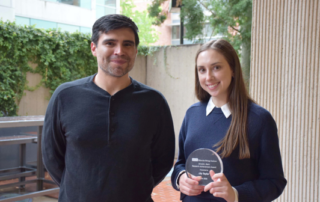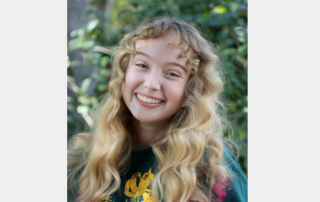About Lauren Mason
This author has not yet filled in any details.So far Lauren Mason has created 305 blog entries.
Ultrafast nano-imaging resolving carrier and lattice dynamics on the nanoscale
X-Ray and Electron Tomography: From Images to Volumes to Knowledge
Building Materials from the Nanocrystal Up
Using the Advanced Light Source (ALS), researchers clarified the mechanism—an unusual intermediate state—that accelerates the transformation of nanocrystals into a superlattice with fewer defects using a two-step, instead of a one-step, process.
“Nanoscale Imaging: Soft X-ray STXM and Ptychography at the ALS”
Congratulations to Jose Rodriguez for Receiving the Inaugural UCLA Academic Senate Service Rising Star Award
The UCLA Academic Senate selected Prof. Jose Rodriguez to receive the inaugural Academic Senate Service Rising Star Award. This award celebrates and recognizes UCLA Senate faculty who are in an early stage of their Senate service and have demonstrated a noteworthy contribution to the Academic Senate. A noteworthy contribution may include activities such as consistent and meaningful participation in committee or council meetings or projects; effective chairship of a subcommittee, special committee or task force; championing shared governance; or demonstrating Senate leadership potential. Preference is given to Senate members who have not yet chaired a standing committee or council. Current committee and council chairs, Senate Leadership and Senate staff are eligible to nominate candidates. Congratulations, Jose!
Deep Learning to Overcome Physical Limits in CryoEM and CryoET
How low can dose go? Applications in ultra low dose electron diffraction of molecular crystals.
UCLA Scientists Break Imaging Barrier to Unlock Secrets of Deadly “Chaotic” Viruses
The findings could pave the way to new treatments for some of our most lethal diseases. For years, graduate student Lily Taylor and her advisor, Professor Jose Rodriguez, have been working on something big: a novel technique that would finally allow scientists to look closely at some of the most “chaotic” viruses in the world. Now, in Taylor’s first published paper as first author, they have done it…
Congratulations to Gabriella (Gabi) Seifert for Receiving an NSF Graduate Research Fellowship
The NSF GRFP recognizes and supports outstanding graduate students in NSF-supported STEM disciplines who are pursuing research-based master’s and doctoral degrees at accredited US institutions. The purpose of the NSF Graduate Research Fellowship Program (GRFP) is to ensure the quality, vitality, and diversity of the scientific and engineering workforce of the United States. The five-year fellowship provides three years of financial support including an annual stipend of $37,000.



